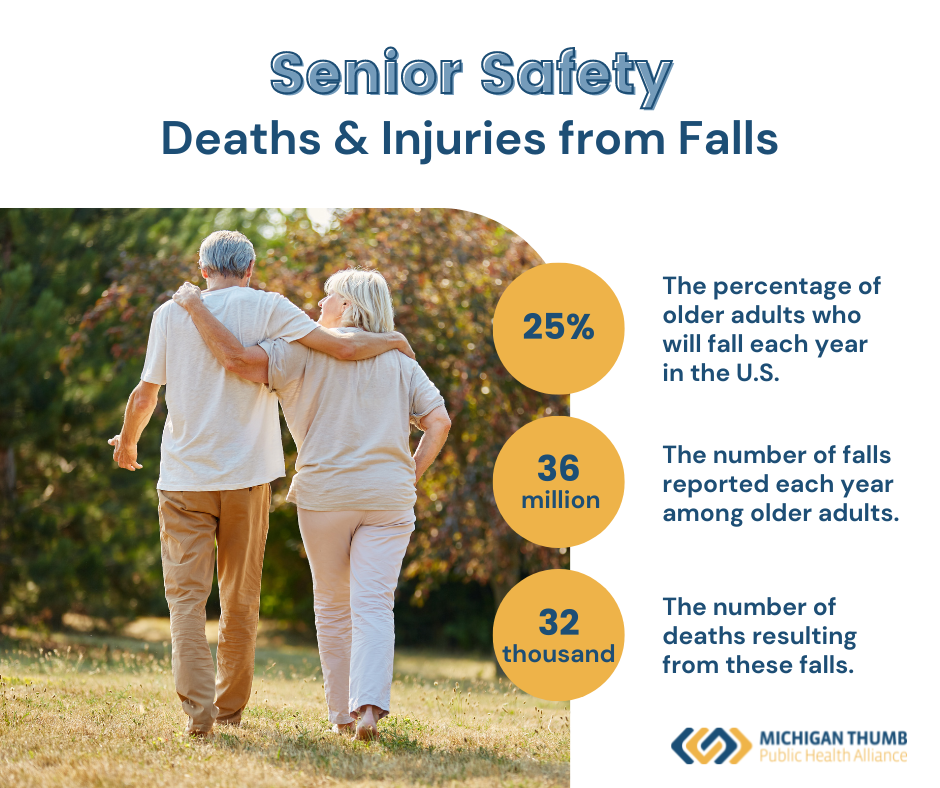Safe Steps for Seniors
 According to the CDC, one out of four older adults will fall each year in the United States, making falls a
According to the CDC, one out of four older adults will fall each year in the United States, making falls a public health concern, particularly among the aging population. About 36 million falls are reported
among older adults each year, resulting in more than 32,000 deaths. Falls put you or your loved one at
risk of serious injury. Following fall prevention tips can help keep many safe, here are some that may
help:
1. Start by making an appointment with a healthcare provider to assess possible risks and discuss fall prevention strategies. The healthcare provider may want to talk about your medications, to identify any side effects that may increase the risk of falling. It is also important to discuss any previous falls, so write down the details, including when, where, and how one fell. Be prepared to discuss instances when they almost fell but were caught by someone or managed to grab hold of something just in time. Details such as these may help the healthcare provider identify specific fall prevention strategies. Discussing health conditions, such as certain eye and ear issues, is important as it may increase your risk of falls. Be prepared to discuss health conditions and how comfortable you are when you walk.
2. Physical activity can go a long way toward fall prevention. Consider activities such as walking or water workouts. These activities reduce the risk of falls by improving strength, balance, coordination, and flexibility. The provider may recommend carefully monitored exercise programs or refer you to a physical therapist. The physical therapist can create a custom exercise program aimed at improving your balance, flexibility, and muscle strength.
3. Consider changing footwear as part of a fall prevention plan. High heels, floppy slippers, and shoes with slick soles can make one slip, stumble, and fall. Instead, wear properly fitting, sturdy, flat shoes with nonskid soles.

